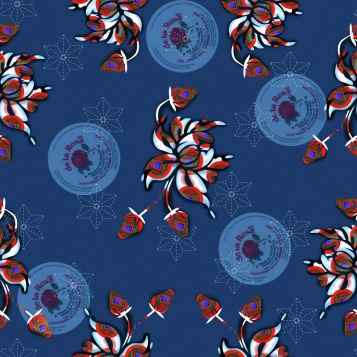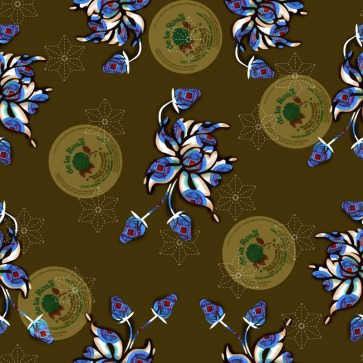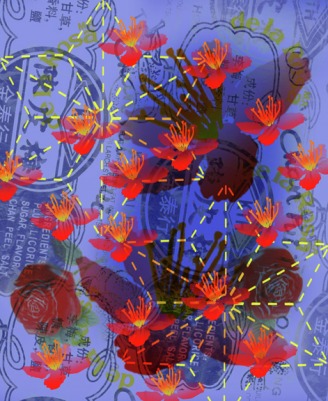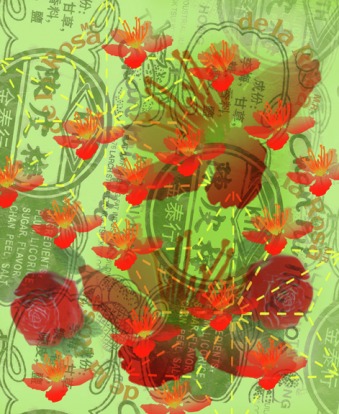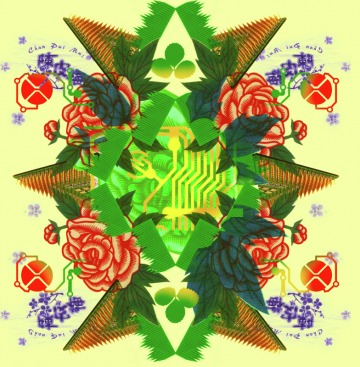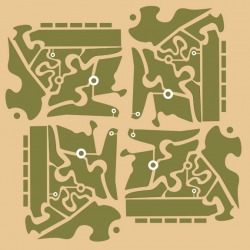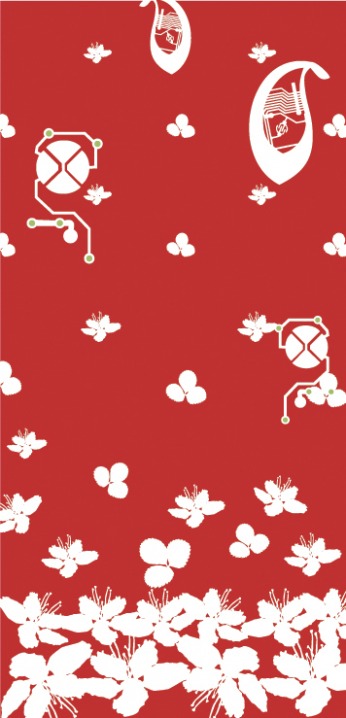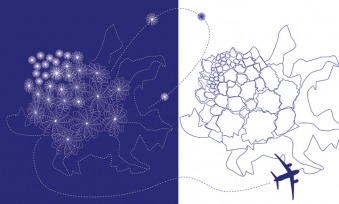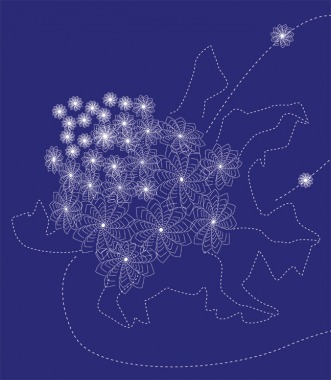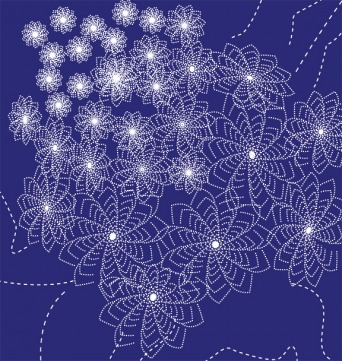Cultural Tech-Fusion Fabrics
Digital Textile Exploration
This group below are the very beginnings of my reflections on the agricultural history of Silicon Valley through motifs of strawberry leaves, pear leaves, cherry blossoms and pear flowers as well as through use of Chinese and Mexican food wrappers and Japanese sashiko stitching. I am beginning to learn about tiling in layers in Photoshop.
I have a detailed description of the inspiration of these studies created last October on my artist blog. Yes, it is a bit crazy that I am maintaining two blogs, but feel this is an important part of the process for me. I want to have this site and blog as the hub of my textile investigations moving forward. I began testing digital printer sites and contacting printers back in March when the Quilt Museum and I began discussions on this investigation into textiles.
This piece below was a test that I used also for the website banner above. I know that my final designs will vary greatly from what I have here now. This piece is kind of a bridge between my mixed media sculptural pieces and these beginning textile designs...I scanned materials I commonly use: vintage Japanese rice bags, sushi grass, Chinese food wrappers. I added in a strawberry leaf to represent past the past agricultural economy and elements of computer chips to represent the digital economy driving Silicon Valley now. I wanted an echo of Mexican textile design in the form to allude to Latino contributions to the area. With access to the San Jose Museums of Quilts and Textiles collection, I hope to mirror such textiles more accurately in future studies.
Above: I envision a textile that transitions from agricultural imagery at bottom to tech images at top. Computer component elements will be incorporated into cultural motifs of recent tech immigrants. The patterns a bottom would include hand stitching (sashiko stitiching) over the digital textile.
Above: studies for creating digital sashiko stitching textile. This digital sketch reflects on the history of the site of the Norman Mineta San Jose International Airport. Before the airport was built, the land was farmed for cauliflower crops. Japanese American field laborers worked these fields. In 1940 a bond passed to fund the airport construction. In 1942 Executive Order 9066 let to the removal of Japanese Americans from Santa Clara County. After Internment, manyreturned to recreate Japantown. Today, San Jose's Japantown is the only California Japantown which returned to its exact prewar location.
The bounding line between the blue and while background represents the this time of transition in 1940 and 1942. The circular shapes on the loop tracking back to the cauliflower represents the Japanese returning to San Jose to create a Japantown on original location.
The bounding line between the blue and while background represents the this time of transition in 1940 and 1942. The circular shapes on the loop tracking back to the cauliflower represents the Japanese returning to San Jose to create a Japantown on original location.
